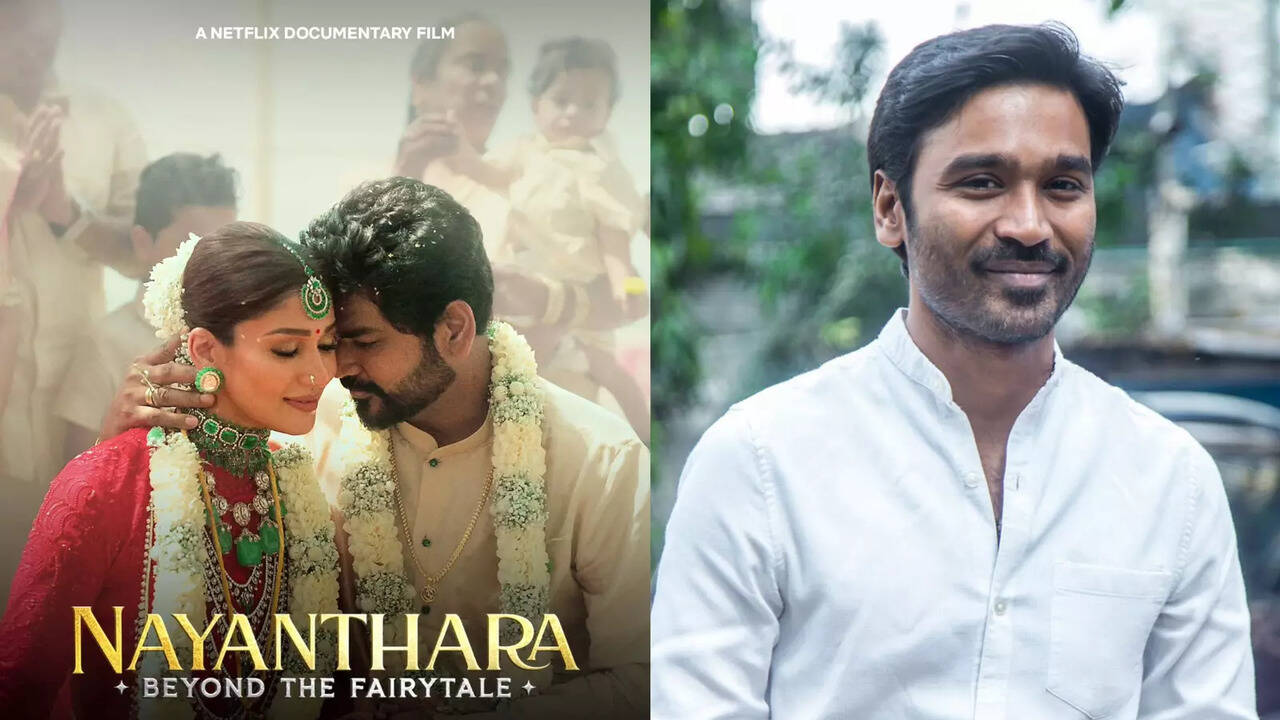 |
|
The Madras High Court's recent decision in the copyright infringement case involving Netflix India and actor Dhanush highlights the complexities of intellectual property rights in the entertainment industry. The court's rejection of Netflix's application to dismiss Dhanush's complaint underscores the importance of obtaining proper permissions before using copyrighted material, even for seemingly insignificant portions of a work. The case centers around the use of a brief three-second clip of behind-the-scenes footage from the Tamil film Naanum Rowdy Daan (2015), a film produced by Dhanush's company Wunderbar Films, in the Netflix documentary Nayanthara: Beyond the Fairytale. This seemingly minor detail has escalated into a significant legal battle, demonstrating the potential consequences of overlooking copyright regulations, even in the digital age where the sharing of content is commonplace.
Netflix's argument that Dhanush's lawsuit was improperly filed in the Madras High Court due to their Mumbai-based office was dismissed by Justice Abdul Quddhose. The court's decision to proceed with the case in Madras suggests a consideration of the location where the alleged infringement had its most significant impact, namely the distribution of the documentary and the harm caused to Dhanush’s intellectual property rights within Tamil Nadu. The court's rejection of Netflix's jurisdictional challenge is significant because it sets a precedent for similar cases involving online platforms and creators. This decision underscores the importance for streaming services to understand and comply with the varied jurisdictional aspects of copyright law across different regions, particularly when dealing with content that originates and has primary distribution within specific geographical locations. The ruling also implies a strengthening stance against such procedural arguments used by large corporations as a method to delay or evade legal processes.
Dhanush's counter-argument, presented by his lawyer PS Raman, emphasized the producer's inherent ownership of any material produced on set. This highlights the central role of producers in the ownership and control of intellectual property rights related to film productions. The claim that an email was sent to the documentary makers to cease using the footage prior to the filing of the lawsuit underscores a proactive effort by Dhanush to resolve the issue outside of court. The timing of the lawsuit, filed a week after the documentary's release, suggests a deliberate strategy to address the infringement after it had taken place and garnered visibility. The court's decision to schedule a further hearing on February 5th to address the interim injunction application indicates that the judge is taking the matter seriously and intends to provide a timely resolution to the conflict.
The case presents a broader commentary on the challenges faced by content creators in protecting their intellectual property rights in the digital era. The ease with which digital content can be shared and replicated makes it crucial for creators to be vigilant in protecting their work. This case serves as a warning to streaming services and content creators alike to prioritize obtaining proper authorization before incorporating any third-party material, no matter how seemingly insignificant. The legal precedent set by this decision could significantly impact future copyright disputes involving digital platforms and content creators, emphasizing the strict enforcement of copyright laws even in relation to short segments of footage. The ongoing legal battle will likely set new precedents for the digital age, influencing how creators, producers, and streaming platforms interact with copyright laws surrounding their content.
The dispute also highlights the intersection of traditional copyright law and the realities of digital content distribution. The speed at which content can be disseminated online underscores the need for swift and effective legal mechanisms to address infringements. The case serves as a reminder of the importance of proactively protecting intellectual property and the potential consequences of failing to do so. The legal battle also brings attention to the complexities of copyright ownership and usage in film productions, particularly in relation to behind-the-scenes footage which often straddles the lines of promotional material and full copyright ownership. The outcome of this case will set a significant precedent for future copyright disputes involving the rapidly growing streaming industry and the ongoing challenge of balancing the creative freedoms of filmmakers with the protection of intellectual property rights.
In conclusion, the Madras High Court's rejection of Netflix India's application is a significant development in the ongoing copyright infringement case. The decision underscores the importance of complying with copyright regulations, regardless of the perceived insignificance of the material used. The case serves as a cautionary tale for both streaming services and content creators, highlighting the need for clear understanding and meticulous adherence to copyright laws in the digital age. The outcome of the February 5th hearing will be critical in determining the future trajectory of this case and its potential impact on future legal disputes in the entertainment industry. The case could lead to significant changes in how streaming platforms approach the acquisition and usage of copyrighted materials, ultimately influencing the creative landscape and the legal framework governing digital content.
